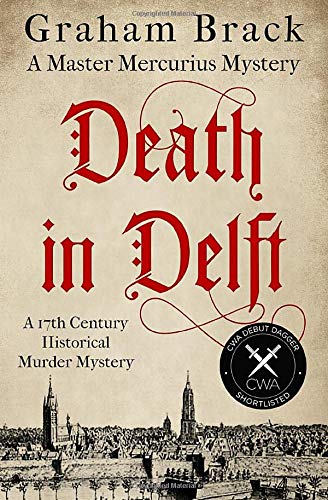Death in Delft (Master Mercurius Mysteries)
Master Mercurius, a young lecturer at the University of Leiden, has joined the ranks of clerical sleuths worth following in historical mysteries. In 1671, his Rector asks him to fulfill a request from the Mayor of Delft to investigate a certain matter on that city’s behalf. They need a man with “a quick wit, a knowledge of God’s law, and abundant energy,” which fits Master Mercurius very well. He is our narrator, and his understated dry humor, combined with practical sensibilities and sincere religious devotion, make his tale infectiously readable.
Following a brief shipboard voyage along the Vliet to Delft, he arrives at the Town Hall and learns about the situation. Three girls, all about eight years old, were abducted from their families. The body of one of them, the unfortunate Gertruyd Lievens, was found buried in a field, a hand-carved cross atop the grave. The two others, a fishwife’s bastard daughter and a rich merchant’s child, remain missing, and with the harsh winter weather, one fears the worst. Mercurius goes about interviewing relevant parties while determining whether the girls, who didn’t know each other, had anything in common aside from their age.
The work gets him interacting with some of Delft’s leading citizens, including logical scientist Antoni van Leeuwenhoek, future father of microbiology, and artist Johannes Vermeer, head of a large, boisterous family. Mercurius makes the rounds of local households for dinner, and visiting Vermeer happily returns us to Girl with a Pearl Earring territory. Mercurius has his own intriguing secret: he’s a Catholic priest disguised as a Protestant clergyman (both careers were so nice, he was ordained twice), which the painter guesses and appreciates. Concisely plotted with well-placed period details, this mystery is just the right length and a promising start to this new series.










